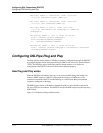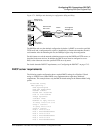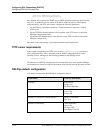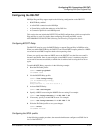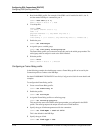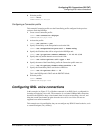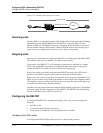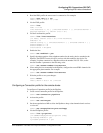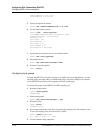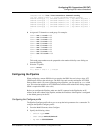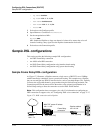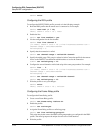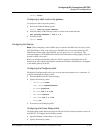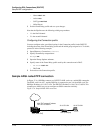
Configuring DSL Connections (DSLTNT)
Configuring IDSL voice connections
APX 8000/MAX TNT/DSLTNT Physical Interface Configuration Guide Preliminary May 9, 2000 17-19
1 Read the IDSL profile the remote user is connected to. For example:
admin> read idsl {1 7 29}
IDSL/{ shelf-1 slot-7 29 } read
2 List the IDSL profile:
admin> list
name = 1:7:29
line-interface = { no [ { switched-channel 1 } { switched-channel +
physical-address* = { shelf-1 slot-7 29 }
3 List the Line-Interface profile:
admin> list line-interface
[in IDSL/{ shelf-1 slot-7 29 }:line-interface]
enabled = no
channel-config = [ { switched-channel 1 } { switched-channel 1 } ]
answer-number-1 = ""
answer-number-2 = ""
clock-source = eligible
4 Enable the line:
admin> set enabled = yes
5 Specify the unique portion of the telephone number for the analog device attached to the
Pipeline. The DSLTNT routes all calls it receives with this number to the device. For
example, if a phone connected to a Pipeline unit has the number 510-555-1234, set the
Answer-Number-1 parameter to the following value:
admin> set answer-number-1=5105551234
6 If two analog devices are attached to the Pipeline, configure the second IDSL channel with
the appropriate phone number. For example:
admin> set answer-number-2=5105551235
7 Write the profile to save your changes:
admin> write
IDSL/{ shelf-1 slot-7 29 } written
Configuring a Connection profile for the remote device
To configure a Connection profile for the Pipeline:
1 Create a new Connection profile for the Pipeline:
admin> new connection pipeline
2 Activate the profile:
admin> set active=yes
3 Set the encapsulation to MP+ to allow the Pipeline to drop a data channel when it receives
a voice call:
admin> set encapsulation-protocol=mpp
4 List the IP-Options profile:
admin> list ip-options
[in CONNECTION/pipeline:ip-options (new)]
ip-routing-enabled = yes
vj-header-prediction = yes




